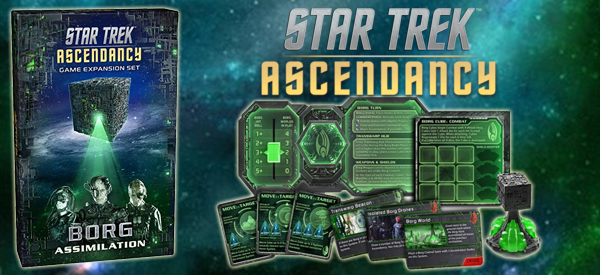
One of the weaknesses of Star Trek: Ascendancy (in my opinion) is the simplicity and irrelevance of the game's "minor races". They just sit there waiting to be invaded or hegemonized. They don't even have ships in orbit to defend themselves from attack (or provide the Klingons with an opportunity for some easy culture). I had hoped that there'd be an expansion pack that would give at least the warp-capable civilizations a little bit of agency. Sadly, that hasn't happened yet, but Gale Force 9 has released an expansion that does add an NPC faction: the Borg.
How do Borg allocate damage between multiple fleets?
The Borg are not a player faction (like the excellent Cardassians or Ferengi expansions). The Borg are a non-player "A.I." entity that use a deck of cards to define their behavior. They act in opposition to every player in the game, and are intended to add some extra player-versus-board challenge. The Borg expansion also adds rules for solo and 2-player games, though I'm not terribly happy with how either of those variants plays.
The big problem is that the rules for the Borg cause a lot of confusion. The non-player element of the Borg creates a lot of strange edge cases that the rulesmakers just didn't seem to think through very thoroughly. Some rules leave the Borg's actions somewhat ambiguous, and there are no rules for determining how to resolve such situations. For example, if a Bog cube is battling multiple fleets belonging to the same player, how does it determine which fleet takes damage? We generally house-rule that the Borg attack the largest fleet first, and that the player who activated the cube decides any ties.
The enemy of all my enemies
The bigger problem, however, is that the Borg movement rules lead to considerable balance issues once the Borg are connected to one player, because that poor player now faces the brunt of the entire Borg Collective. Once the Borg have a path to any one player's systems or homeworld, the Borg will exclusively funnel all of their ships down that one path, since it's the only "connected" route available. The only way this will change is for the targeted player to go out of his or her way to try to create another, shorter path to one of the other players (essentially painting a huge target on that player's head). Or I guess one of the other players could accidentally create a shorter path while they're exploring, if they're dumb or not paying particularly close attention. In any case, the problem is that once the Borg become connected to any one player, the Borg stop exploring and looking for the other players, which randomly puts the single player in a disadvantaged defensive position while the other two players are free to build up without much threat of being targeted by the Borg.
Having the Borg in play gives further reason for players to cooperate.
The game tries to offset this by making it so that the Borg become more powerful if they assimilate any worlds (including warp-capable civilizations), or if they assimilate any one player. If your homeworld is assimilated by the Borg, you even get to take over as a Borg player, taking a whole extra Borg turn in which you get to influence how they behave. This is a fun and thematic way of allowing an eliminated player to continue to participate in the game and seek some degree of "revenge" against the other player.
The idea here is that the players shouldn't let the Borg concentrate on wiping out a single player, and we should all partially co-operate in order to keep the Borg in check. There is no actual co-operative victory, so you're only co-operating with each other to the ends of stalling the Borg long enough for you to achieve a victory, at the expense of the other players. There is no "defeating" the Borg.
... [More]
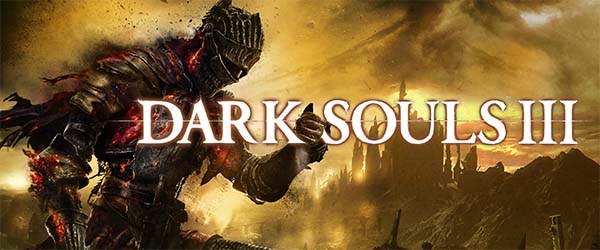
Table of Contents
What the hell does poise do?!!
In my review, I noted that poise seemed to have been turned off in the game's code. Well, FROM Soft has apparently stated that poise is working as intended. Really? How? What does it do? FROM was not forthcoming (so far) with any details on what the stat is supposed to actually do, other than to say that it is "more situational". Ok, whatever. So I guess it's up to the community to try to figure out how this stat apparently works, since it doesn't work in any way comparable to the previous games, nor does it seem to solve the problem that the original implementation of poise was intended to solve.
UPDATE Nov 16, 2016:
It looks like we've finally figured out what Poise does in Dark Souls III. It seems to only be activated when using large weapons that provide Hyper Armor.
I had previously believed that Poise functioned as an "escape method" from quick, stun-locking weapons (like daggers). My early interpretation of Poise was that a higher Poise value may allow the player to escape from a stun lock and be able to roll / counter-attack / parry after 3 hits rather than 5 or 6 consecutive hits. I even remember testing this hypothesis out and finding it to hold true. This would also apply to situations in which a player gets attacks from multiple enemies simultaneously (or in quick succession). Higher Poise would allow you to escape from the 3rd enemy's attack, rather than the 4th or 5th. But according to the Wiki, this doesn't seem to be the case. Am I wrong?
If it is true that Poise only affects Hyper Armor, then I'm still not happy with the mechanic, as it only applies to very specific builds, and might as well be a stat on the weapon rather than a feature of armor. But if it does also affect the ability to escape stun locks, then I guess I would be a little bit more satisfied.
Poise was originally intended to act as a counter to extremely fast weapons like daggers, rapiers, and so on, that could quickly hit and stagger an opponent and put them in a stun lock from which they couldn't escape (so long as the attacker still had stamina). It was also intended to give players with slower weapons an opportunity to tank their way through hits with such fast weapons. You'd still take damage, but assuming your attack with a stronger, slower weapon did more damage than your opponent's weaker, faster weapons, then the trade-off would still be in your favor. If you were going to use a very slow weapon, then it behooved you to also equip heavy armor and other poise-boosting equipment so that you could tank through opponents' hits. That doesn't seem to be the case anymore. A knight in full heavy armor should not get stun locked in a 10-hit combo from a dagger. It simply shouldn't happen. This is what poise was designed to prevent, and it's not doing its job. If an invader shows up in your world with an estoc, and you aren't an expert at parrying, then you might as well just offer up your head on the chopping block and get it over with.
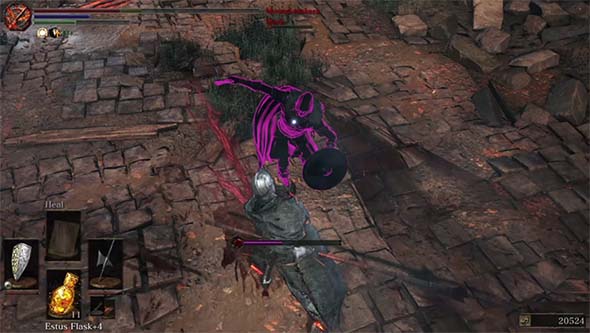
Without poise, heavy armor is worthless, and daggers are incredibly overpowered against slower combatants.
Without poise in this form, heavy armor simply isn't worth its weight encumbrance, especially since you can't even upgrade it to increase its damage resistance. This was a problem in Demon's Souls, which didn't have poise. Heavy armors generally didn't reduce damage enough to be worthwhile, they prevented the player from effectively rolling, and they were so heavy that they prevented the player from being able to pick up all the loot in a level because that game also had an item burden. Rolling was the end-all-be-all of defense in Demon's Souls, and that was one of the game's greatest weaknesses. It was easy to overlook because the developers didn't know better at the time. But they do know better now. Was poise exploitable in Dark Souls? Sure. It was really exploitable in Dark Souls II due to its connection to hyper armor and the inclusion of farmable healing items. But whatever FROM Soft did to it in DSIII seems like a severe overreaction.
Once I learned that poise wasn't working the way I expected it to, I gave up on trying to engage a lot of enemies with my slow halberd. Instead, I started fighting the knights in Lothric Castle and the Grand Archives with my flame-infused barbed straight sword - which I also spent a bunch of titanite to fully upgrade. This speedier weapon allowed me to attack these knights as fast (or faster) than they could attack me, giving me enough of an edge to reliably beat them. The ones with the tower shields and lances still gave me trouble, but the swordsmen fell swiftly to my +10 Barbed Flame Sword. Even Yahtzee noted in his Zero Punctuation review the starting long sword seemed better than any of the numerous boss weapons that he found. I imagine that this is because he also had trouble with the lack of poise, but didn't quite figure out that poise wasn't working.
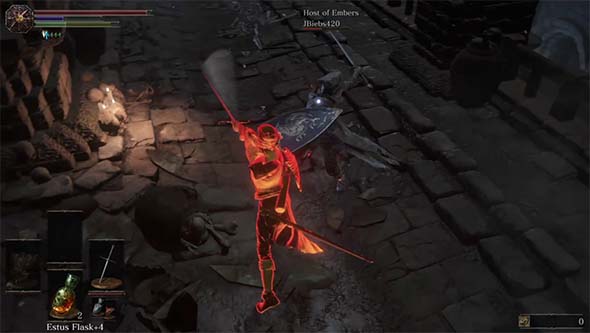
Lack of proper poise allows the estoc's reach and speed to make it a deadly PvP weapon.
So this leaves us with the question of "what, exactly, is poise intended to do?"...
[More]
9fc5b24e-c771-4f00-81da-f9aa41f3eb5f|1|5.0
Tags:Dark Souls, Dark Souls III, poise, PvP, co-op, covenant, phantom, summon, invader, invasion, friendly fire, NPC, Siegward, Siegward of Catarina, Patches, Unbreakable Patches, Anri, Anri of Astora, Yorshka, Blades of the Darkmoon, Darkmoon

Even though the player character in Dark Souls can be in a "hollow" state, the player never truly goes hollow. At least, not in the sense that NPCs and enemies have gone hollow.
According to Dark Souls' mythology, the undead are condemned to repeatedly wander Lordran in search of a cure, being unable to permanently die. But for virtually all such undead, this quest is futile. An undead can temporarily stave off hallowing by absorbing souls or infusing themselves with the humanity of someone else. Eventually, an undead dies one too many times, or is worn down by the daily grind of collecting souls, and loses the will to go on -- or is simply unable to continue collecting souls and humanity. When this happens, that undead becomes hollow, loses his sanity and free will, and continues to wander the world as a mindless zombie attacking any un-hollowed that it encounters on sight.
It is unknown how many "Chosen Undead" are brought to Lordran or the Undead Asyulm, but the Crestfallen Warrior at Firelink tells us that many have come before you. Is it possible that all hollows in Lordran were at some point "Chosen Undead", tasked by Frampt to retrieve the Lordvessel and re-kindle the dying flame?
Probably not.
A great deal of the hollows that you encounter in the game were likely former residents of Lordran, and there was no need to select a "Chosen Undead" until Gwyn's power faded to a "cinder", and the fire began to die. This presumably took a very long time - a whole "age".
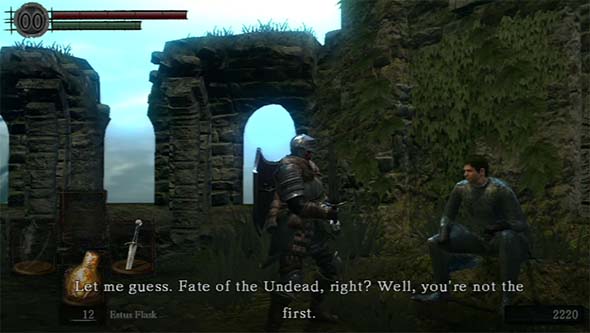
The Crestfallen Warrior informs us that we are not the first "chosen undead",
and suspects that we won't be the last either.
Avoiding hollowness with purpose
Many undead adventurers wandered into Lordran (or were abducted and taken there), and they struggle to hold onto their precious humanity for as long as possible, fighting for their lives in the fear that they, too will go hollow. Some, like the Crestfallen Warrior, resign themselves to the inevitability of hollowness, and find a sense of purpose in warning other new arrivals that they, too, are doomed. Others pursue some seemingly impossible goal or objective in the hopes that the journey will provide them with the sense of purpose necessary to avoid (or at least delay) hollowing. And yet others have taken up crafts or vocations such as blacksmithing, vending, or guarding something in order to keep them focused and avoid hollowing (and to exchange goods or services for the very souls that they need to stave off the hollowing). Keeping such a goal may help keep an undead partially lucid, but they also seem to begin to forget everything else, and only the knowledge of their quest or craft remains. Perhaps, the undead guarding various areas of the game were, at one point, tasked with protecting that place (or something within that place), but have long since lost their mind, and only that compulsion to defend has remained.
Going on "one final quest" seems to provide adventurers with enough focus to hold back hollowing.
But hollowing isn't just a thematic element reserved for non-player characters; hollowing is also a mechanic in the game that affects the player. Whenever the player character dies, you are reborn at the last bonfire in a hollowed state, unable to summon help from allies until you restore your humanity through the consumption of someone else's humanity. In Dark Souls II, hollowing further handicaps the player by cummulatively reducing your total health each time you die, and only restoring your humanity can refill your health meter. In both these cases, the player is not truly hollow; you are only in a state of partial hollowing.
It's unclear whether non-player characters are able to die and restore their humanity, or if deaths contribute to an irreversible progression towards hollowness. There are, after all, apparently hollowed NPCs such as the undead merchant in the Undead Burg and blacksmith Lenigrast in Majula who are sane enough to have kept their shops open. The presence of NPC summon signs hints at the possibility that they, too, are capable of restoring their own humanity through the same mechanisms that you can, but the game itself justifies this with ambiguous appeals to "time distortion" and hypothetical parallel realities that obfuscates the matter - particularly where Solaire and Lautrec are concerned.
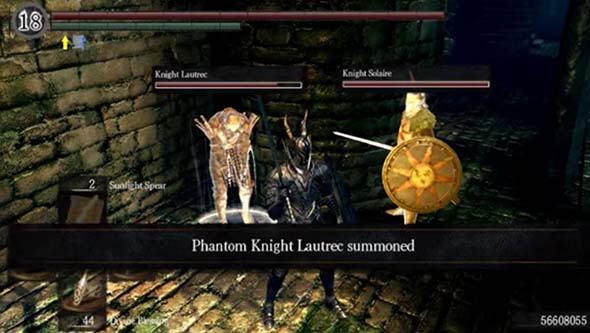
Summoned NPCs may recover humanity as you do, or they're from another time or dimension, or both.
Solaire's dialogue refers to "heroes centuries old phasing in and out.". Solaire may be using the words "world" and "time" interchangeably. This seems to be the game's justification for how summoning works: you may be literally summoning someone from a bygone era into your own time period. Anytime, you are summoned to someone else's world, you are also being transported to another time (past or future, depending on whether or not you finish the game). Solaire and Lautrec seem to somehow come from another time or dimension, but other characters definitely seem to exist within your world and time: Andre, the Crestfallen Warrior, Rhea and her companions, Big Hat Logan and his apprentice, and so on are all undead who have seen many other "Chosen Undead" come to Lordran seeking their destiny.
In any case, it's not until an undead "gives up" that the hollowing process becomes complete. What do we mean by "giving up"? For an NPC, it means that they gave up on life and went hollow, and the player typically ends up putting them down. For the player, it means that you stop playing the game. As long as you continue to play the game, then your character will continue to hold onto a sliver of humanity and maintain his or her sanity for a little while longer. When you put down your controller for the last time, you have condemned your character avatar to finally succumbing to hollowness, whether you recognize it or not... [More]
ce0263eb-66fa-4c8b-b624-2655b7809cd6|3|4.7
Tags:Dark Souls, Dark Souls II, Scholar of the First Sin, Demon's Souls, From Software, undead, Lordran, Drangleic, hollow, hollowing, humanity, souls, zombie, Solaire, Lautrec, Blacksmith Lenigrast, Crestfallen Warrior, Andre of Astora, Rhea of Thorolund, Seigmeyer of Catarina, Big Hat Logan, Gwyn, Sunlight Maggot, God of War, covenant, Warrior of Sunlight, Gravelord Servant, vagrant, perma-death, NPC, lore, Dragon's Dogma, pawn, online, multiplayer, PSN, XBox Live, Steam, emergent narrative
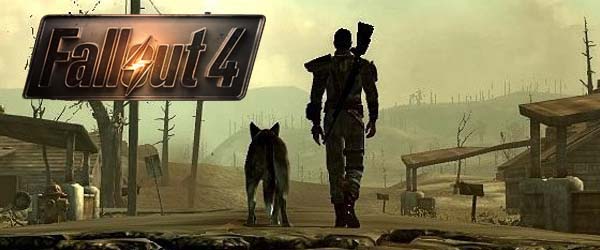
"Pirate Lord Captain Gregle, Slayer of Ancients and World-Renowned Trapeeze Artist" sounds like a pretty legendary character, right? Well, he wasn't. In fact, he was a very lucky, over-achieving halfling rogue in a short-lived campaign of Dungeons & Dragons. I rolled for the character's initial stats, got fairly low constitution, and then rolled the minimum value for hit dice for the first few levels. The result was a sixth-level character with a pathetic sixteen max hit points! A single lucky shot from virtually any enemy could be an instant KO for that character, and getting engaged in melee would practically be a death sentence. While some power gamers may scoff at the idea, rage against their dice, and then remake their character with a standard array and average HP, I decided to run with it and role play the hell out of little Gregle.
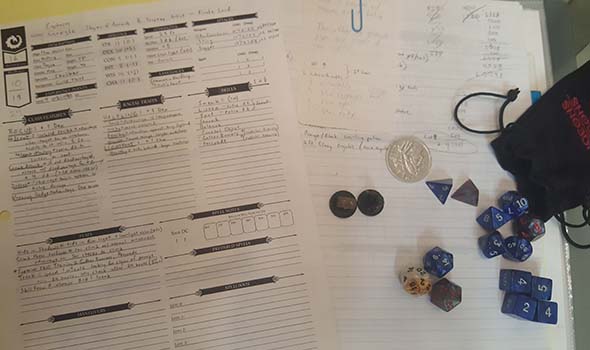
Character sheet for "Pirate Lord Captain Gregle, Slayer of Ancients and World-Renowned Trapeeze Artist"
With the low initial constitution, I focused my character around stealth abilities, disengagement and evasion tactics, and ranged attacks, and continued to improve those skills as I leveled. Knowing that he's a pathetic weakling, Gregle overcompensated by being a very flamboyant braggart and narcissist (I took inspiration from Stephen Colbert), and thought that he was more charming than he actually was. He routinely hid in the shadows, taking pot shots at vulnerable enemies and racking up kill steals from afar while his two warrior companions did most of the heavy-lifting. He would occasionally disarm a trap or unlock a door, and once used a clever trick to pacify (and subjugate) an entire band of pirates. He then took credit for much of the party's achievements.
Despite having only slightly above average charisma, he leaned on his halfling luck to succeed on some charisma checks and make himself a bit of a celebrity with the local townies for his exaggerated heroics. He reveled in the unprecedented access to their community that the locals provided, and he reveled in the adulant gifts that they showered upon him, happily hoarding it all in his bag of holding. The other party members never called him out on it in public, since they were just happy to have the cooperation of the locals.
While the other players and DM enjoyed Gregle's antics, their characters only barely tolerated his presence. During the actual adventuring, he was constantly getting into trouble and needing to be bailed out by his fellow adventurers. He once falsely awakened the party during his night watch after mistaking a wyvern for a dragon. In another instance, he was KO'd while using spider-boots to walk up a ceiling to pursue an enemy that had climbed a rope to escape the conflict, and he became stuck on the ceiling, forcing the party to figure out a way to get him down. They reluctantly obliged to help him, since Gregle was the possessor of the party's bag of holding, and was actually good at sneaking around to perform recon, unlocking doors, disarming traps, coming up with clever plans to avoid direct conflict, and other appropriately roguish things.
Gregle was one of the most fun characters that I've ever played, and he provided me with one of my most entertaining gaming experiences. This is the power of role playing to a character's strengths and weaknesses. It's a power that Bethesda shows no interest in utilizing for Fallout 4.
Out of the vault and into the wastes
I have to give credit to Bethesda for making one really interesting decision with Fallout 4: the game starts in a time period prior to the Great War that triggered the nuclear holocaust, and so it explores as yet unseen elements of the series' backstory. Or at least, it does for all of fifteen minutes. Much like Fallout 3, the pre-war gameplay and time that you spend in the vault is really just an extended tutorial and character-creation process. But unlike Fallout 3, it doesn't give enough time and depth to those settings to make the player legitimately care about them or the characters in them.
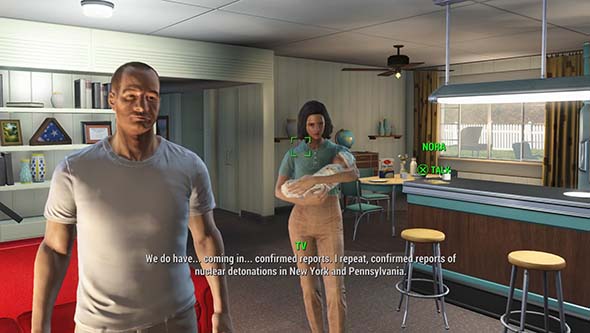
You don't spend enough time in your pre-war home or vault to develop any attachment to the place or people.
After creating your character and setting your S.P.E.C.I.A.L. stats, you and your spouse immediately flee with your infant child to the neighborhood vault. Once inside, you're handed the trademark silly superhero pajama jumpsuit and then promptly cryogenically frozen. You awake to witness your spouse get murdered and child kidnapped by apparent raiders, but then get frozen again. Then you awake again to do the combat tutorial against radroaches before leaving the vault and starting the game proper.
You spend virtually no time in the pre-war time period; you don't bond at all with your spouse or child; you don't establish any connections with your home or neighbors. There is absolutely no emotional bond between the player and what is lost in the war. So when the game drops you in the wasteland with a dead spouse, a missing child, and a quest to track down the kidnapper/killer, it does so without creating any emotional connection or investment for the player. I could go to Concord and then to Diamond City and search for my son, or I could just wander off in any random direction fighting raiders and painstakingly building my own little settlement out in the middle of nowhere using salvaged car tires and scrapped raider armor. Fallout 4 doesn't waste any time taking a nose-dive into the open world limbo.
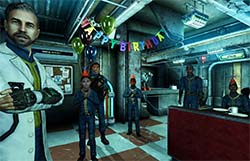
Fallout 3 simulated an entire childhood in the
vault, with friends, family, and even bullies.
Compare this against Fallout 3's prologue. It spent a considerably longer time developing your character and immersing you in the vault. Your dad (voiced by Liam Neeson) plays with you as a baby to teach movement and camera controls, he teaches you how to shoot, and throws a surprise birthday party for you. You interact with a childhood friend, other vault dwellers, and even a bully in order to tutorialize persuasion and speech checks and learn how to solve conflicts without violence. You even go to school and take a test to determine your default skills. In the short amount of time in the vault, you've lived a montage of an entire life.
With only a little bit of buy-in from the player, Fallout 3's Vault 101 becomes a living, breathing place populated with people who you can relate to and care about. You, as a player, have an investment in it and the characters that inhabit it. So when shit happens and you have to leave the vault, it's a monumental moment, and the events of your life, and the decisions that you've made, will shape your character's development over the rest of the game.
Even Skyrim gave the player interesting role-play decisions in its tutorial by required your character to make an immediate decision to follow the imperials or the Stormcloaks (though the scenario makes that decision a pretty one-sided one). And your initial choices of weapons and battle tactics would level up those specific skills; thus, starting the character down a path towards specializing in those skills as the game progressed (though you were completely free to change all that if you want).
And Fallout 4 has a perfect opportunity to take that father / son dynamic from Fallout 3, and invert it! The game could have opened with the birth of the baby. Since Bethesda had to record dialogue for multiple names for the player character, they could just as easily have done the same with the child's name. The doctor could hand you a paper with "This Year's Popular Baby Names", and you could chose one of those names that were explicitly recorded in dialogue. You could even be given the option to type your own name and replace the child's name with "my son" in dialogue. You could fill out the child's name and your own character's name on the birth certificate. Naming the baby would create a sense of ownership and connection to the child that might help encourage the player to pursue the main quest.

Fallout 4's vault serves only as a combat tutorial with no depth, emotional resonance, or meaningful decisions.
But it doesn't have to stop there... [More]
0b31d11f-77e0-4ddd-b277-8b1e013b818d|0|.0
Tags:Fallout, Fallout 4, Bethesda, RPG, Boston, commonwealth, minuteman, minutemen, wasteland, post-apocalypse, nuclear weapon, nuclear war, NPC, Dogmeat, power armor, crafting, ludonarrative dissonance, open world, sandbox, raider, synth, android, slavery, underground railroad, freedom, rights, morality, ethics, family
Skyrim is one of the biggest names of this console generation. It's already earned the status of "classic" in some circles. It's over three years old now, and I've been playing it (and its DLC) on my PS3 off and on for much of that time. I've been wanting to write a review, but I just never felt that I had progressed far enough into the game to have a full idea of its overall quality. Considering how long the game's been out, and how successful it's been both critically and commercially, this is more of a retrospective than a true review, since I'm not going to influence anybody's purchase decision. All I can do at this point is talk about what I think he game did right, and what it did wrong, so that future games can hopefully improve on the formula.
After years of playing, I've finally made enough progress with various characters to feel comfortable writing a review. With the recent rumors that Fallout 4 may reuse Skyrim's engine, I feel that this review actually has some relevance still.
The game also includes DLC, which I have reviewed separately in a another post.
The engine finally works! … Mostly …
It seems like Bethesda’s open-world game engine is finally maturing. It’s still a little rough around the edges and has its fair share of bugs and glitches (particularly pertaining to companion characters and home customization), but I was amazed when I realized that, for the first time with a Bethesda RPG, I had been playing the game for weeks without needing to consult the online wiki to find a work-around for a glitch that rendered any characters missing, quests inaccessible, or items missing! With Oblivion and the two Fallout games, it didn’t take more than a few hours of gameplay to start running into such glitches.
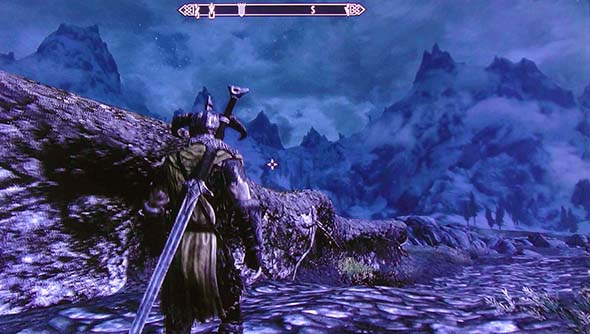
The large, open world is finally stable enough to be more fun than frustrating.
My roommate actually had a game-breaking glitch that prevented him from saving after the initial character creation (including auto-saves), so he lost a whole Saturday afternoon’s worth of progress and had to restart the game. That one was a doozy, and admittedly the worst bug that I've experienced so far in any Bethesda game! But these problems have been the exception rather than the norm.
So that’s one big check mark in Skyrim’s favor compared to previous Bethesda games!
Removing level-scaling makes leveling a reward rather than a punishment
Believe it or not, it wasn't the frequency of glitches that deterred me from finishing Oblivion; it was the level-scaling system. On paper it seemed like a good idea. Leveling up the enemies, quests, and loot so that the game is consistently challenging and rewards are consistently worthwhile sure sounded like a good idea!
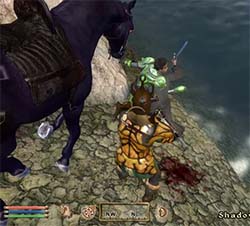
Oblivion's level-scaling resulted in a world overrun by trolls, glass-armored bandits, and Daedra.
But in practice, it turned out to be completely ruinous. Leveling felt more like a punishment than a reward, as everything in the world also became progressively harder. This issue was compounded by the poor balance between different classes. If you weren't leveling your combat skills, and had created a class built around - say - Mercantile, Athletics, and Acrobatics then you could easily over-level early in the game simply by walking around and talking to NPCs, only to get slaughtered in the first Oblivion gate because the enemies were stronger than you and you couldn't talk your way out of the fight.
Skyrim fortunately, does not retain Oblivion's strict level-scaling feature.
Some quests, enemies, and loot are scaled, but most things are not (or they're only slightly scaled). Now, bandits are always just bandits, overpowering enemies start the game overpowered, and the world does not suddenly become exclusively populated by trolls and Daedra halfway through the game. "Dungeon bosses" do seem to scale with the character’s level. As you start going up in levels, you’ll start to notice that the grunts in the dungeons are trivial to fight and leave worthless loot. You’ll actually feel like all that leveling has paid off! Then you get to the "boss" at the end of the dungeon and might get your ass handed to you and have to reload several times.
Hard areas should be hard, and easy areas should be easy. It's just mildly annoying that this game gives you no indication which it’s going to be until you’re already a mile underground, and the difficulty varies wildly - even within a single dungeon crawl.
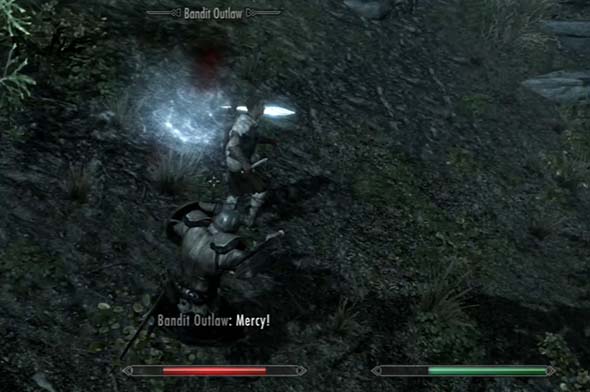
Most ambient encounters aren't scaled to the player's level, so bandits always remain just bandits.
Removing the class skills frees up the player to develop whatever skills he or she needs without the compulsion to micro-manage leveling class skills versus non-class skills. Character development feels much more natural and organic, and you can change your specialization at any time if circumstances change ... [More]
452deb1e-0838-4ffe-a6da-528d57ba6804|3|2.0
Tags:The Elder Scrolls, The Elder Scrolls V: Skyrim, Skyrim, Bethesda, RPG, action, fantasy, open world, dragon, dragonborn, magic, user interface, NPC, AI
|

| 12 | | | | | | | 60 | | 11 | | | | | | | 55 | | 10 | | | | | | | 50 | | 09 | | | | | | | 45 | | 08 | | | | | | | 40 | | 07 | | | | | | | 35 | | 06 | | | | | | | 30 | | 05 | | | | | | | 25 | | 04 | | | | | | | 20 | | 03 | | | | | | | 15 | | 02 | | | | | | | 10 | | 01 | | | | | | | 05 |
|